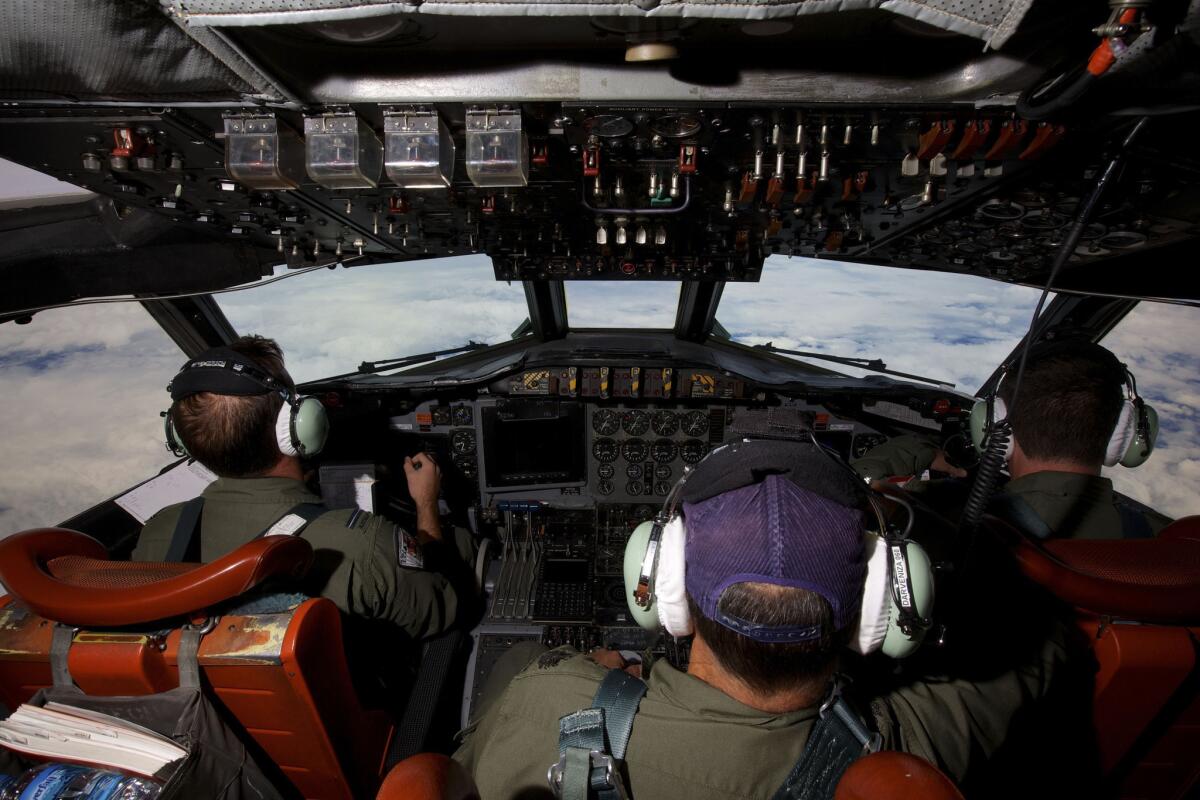Is it Malaysia Airlines Flight 370 or just garbage?

Flight 370, where are you?
The Malaysia Airlines’ Boeing 777 went down somewhere in the Indian Ocean on March 8. That’s what the satellite data said. So that’s where they’ve been searching.
On Friday, though, further analysis of the data used to plot the doomed plane’s final course revealed that it was flying faster than expected, meaning that it probably crashed in a different area of the Indian Ocean off Australia. So search crews have shifted their focus.
But it is, as they say, a big ocean.
What’s also becoming shockingly apparent is that it’s also very polluted ocean. Satellites keep picking up images of stuff in the water, but at least so far, none of that stuff has been found, much less identified as debris from the missing plane.
It turns out that Flight 370 went down in an area called the Indian Ocean Gyre, notes Marc Lallanilla at the website livescience.com in an article headlined “Finding Flight 370: A Needle in a Garbage Patch?” The Indian Ocean Gyre is “a region where there is little movement of the ocean’s currents, which leads to the accumulation of floating garbage.”
Or, as the New York Times reported this week:
“ ‘Any search and rescue attempt will be hampered by untold quantities of debris,’ said Charles Moore, a sailor who studies marine debris at the Algalita Marine Research Institute in Long Beach, Calif. Even with relatively high-resolution satellite imaging, he said, ‘you are going to be confounded by the detritus of civilization.’ ”
“The detritus of civilization.” Sounds better than “garbage,” doesn’t it? But it isn’t.
Not only that, but that garbage doesn’t just pose a danger to marine life, or act as a nuisance to those searching for Flight 370. As Lallanilla writes: “Recent research has found that about 1,000 different microbes thrive on garbage patches. Many of the bacteria belong to the genus Vibrio (the same genus as the cholera bacteria), which is known to cause diseases in humans and animals.”
Which even to a non-scientist sounds pretty nasty.
The human tragedy of Flight 370 is not to be dismissed. For the families who have lost loved ones, it is a life-changing event, a pain that will never go away.
But on a global scale, what the search for the missing plane has revealed is another human tragedy: the callous disregard we show for our oceans and our environment.
We will find Flight 370. Hopefully, we will also find out why it crashed.
But we don’t need to look nearly so hard to find out why the world’s oceans are so polluted.
We just need to look in the mirror.
ALSO:
Chris Christie’s ‘Bridgegate’ given a $1-million coat of whitewash
When rulers go bad: A peek inside 5 doomed dictators’ opulent lifestyles
Girls shouldn’t wear leggings to school -- and progressive parents should agree
Follow Paul Whitefield on Twitter @PaulWhitefield1 and Google +
More to Read
A cure for the common opinion
Get thought-provoking perspectives with our weekly newsletter.
You may occasionally receive promotional content from the Los Angeles Times.











